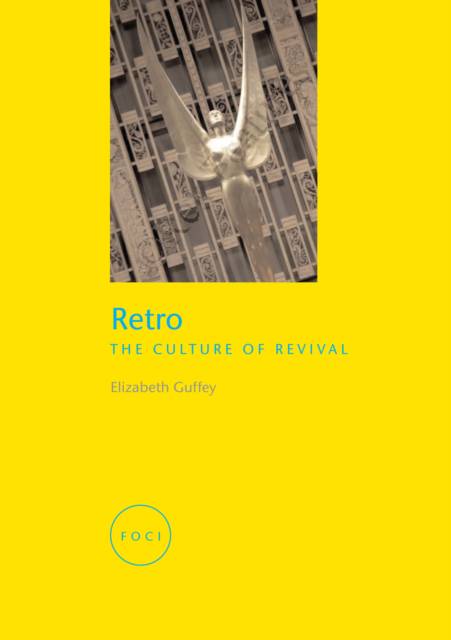
- Retrait gratuit dans votre magasin Club
- 7.000.000 titres dans notre catalogue
- Payer en toute sécurité
- Toujours un magasin près de chez vous
- Retrait gratuit dans votre magasin Club
- 7.000.000 titres dans notre catalogue
- Payer en toute sécurité
- Toujours un magasin près de chez vous
Description
Bell-bottoms are in. Bell-bottoms are out. Bell-bottoms are back in again. Fads constantly cycle and recycle through popular culture, each time in a slightly new incarnation. The term "retro" has become the buzzword for describing such trends, but what does it mean? Elizabeth Guffey explores here the ambiguous cultural meanings of the term and reveals why some trends just never seem to stay dead.
Drawing upon a wealth of original research and entertaining anecdotal material, Guffey unearths the roots of the term "retro" and chronicles its evolving manifestations in culture and art throughout the last century. Whether in art, design, fashion, or music, the idea of retro has often meant a reemergence of styles and sensibilities that evoke touchstones of memory from the not-so-distant past, ranging from the drug-induced surrealism of psychedelic art to the political expression of 1970s afros. Guffey examines how and why the past keeps coming back to haunt us in a variety of forms, from the campy comeback of art nouveau nearly fifty years after its original decline, to the infusion of art deco into the kitschy glamor of pop art, to the recent popularity of 1980s vogue. She also considers how advertisers and the media have employed the power of such cultural nostalgia, using recycled television jingles, familiar old advertising slogans, and famous art to sell a surprising range of products. An engrossing, unprecedented study, Retro reveals the surprising extent to which the past is embedded in the future.Spécifications
Parties prenantes
- Auteur(s) :
- Editeur:
Contenu
- Nombre de pages :
- 224
- Langue:
- Anglais
- Collection :
Caractéristiques
- EAN:
- 9781861892904
- Date de parution :
- 15-11-06
- Format:
- Livre broché
- Format numérique:
- Trade paperback (VS)
- Dimensions :
- 151 mm x 207 mm
- Poids :
- 385 g







